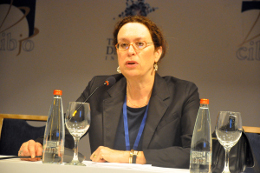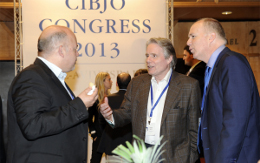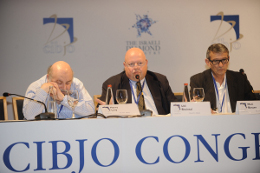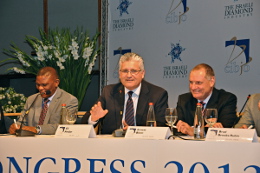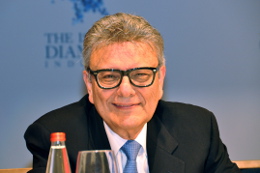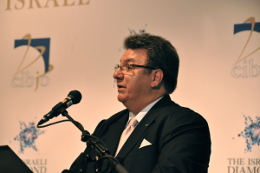Precious Metals Commission discusses Dodd-Frank Act in the United States
Meeting at the 2013 CIBJO Congress, the Precious Metals Commission heard from Cecilia Gardner, President and CEO of the U.S. Jewelers Vigilance Committee, about the Dodd-Frank Act in the United States and how it affects the jewellery industry’s use of gold.
The law relates to a wide range of industries and the sources of their gold supplies. Publicly traded companies must report to the Securities and Exchange Commission on the gold they use in their products and where it is sourced.
Ms. Gardner explained that the supply chain for gold is complex and that, while some of the reporting requirements that relate to recycled gold and gold refined after a certain date were eased, the rest of gold production is covered by the act.
She said that one American firm affected by the gold provisions reported that it has 300 suppliers of products with gold content, and those suppliers also have their own suppliers. Ms. Gardner noted the complexity of the law’s provisions. No gold can be used that originates in the Democratic Republic of Congo and nine neighbouring states, she explained.
Ms. Gardner stressed, however, that there is information available for how to comply with Frank-Dodd. The JVC has created an essential guide to how to comply for the jewellery industry which, unlike big miners and refiners, do not have compliance officers. She said there are around 25 to 30 publicly traded firms that are affected by the act.
The European Union is looking into creating a similar law and has asked the JVC for its comments. CIBJO plsns to take leading role in the industry’s response to the EU, she said.
Gardner also explained that the Federal Trade Commission in the Unitd States is revising its guidelines and CIBJO and other bodies had submitted proposals. At a meeting in June, the FTC will hold discussions relating to precious metals.
The commission also heard about the price of gold and the demand from specific countries as well as usage in jewellery. In consumption terms, there have been large rises in India and China, while the United States has fallen and Russia is steady, but Turkey is continuing to see a decline.
Gold supply from scrap has risen hugely in United States, Italy, China, India, UAE, United Kingdom and Ireland and Mexico since 2008. Increasingly, mixed metals are being used to make jewellery affordable for consumers. The Danish jewellery company Pandora has been successful in this respect. Costume jewellery becoming increasingly popular around the world.
There was also a discussion on the issue of nickel and the EU nickel directive in 1998 that is being replaced by a 2011 directive. It was proposed that CIBJO members urge their National Standards Bodies to seek a temporary suspension of Appendix 1 of EN1811:2011 and a reintroduction of the 1998 directive.
The commission urged members to seek agreement from national governments that products already in the supply chain before March 31, 2013, be considered as compliant with EN1811:1998.
Photo Caption: Cecilia Gardner, President and CEO of the U.S. Jewelers Vigilance Committee

